When I moved from the northern B.C. To Vancouver to go to school one plant which I did not have any experience with was Rhododendrons. Most of the time I have lived on the coast I have ignored them as they are a flourish of color in the spring and then just somewhat shapeless evergreen blobs the rest of the year. I had heard about a wonderful collection of Rhododendrons at Playfair Park and decided I must check them out.

Playfair Park Rhododendrons In May 2006.
The experience of seeing the variety at Playfair Park which is made up of many species more than hybrids and crosses made me change my mind about ‘Rhodos’. The Rhodos there are big and small leaved, fuzzy or grainy textured, and bloomy along with every color imaginable blooming over many months. I went back week after week photographing trying to label what I saw and what really took my breath away every year has been the numerous Rhododendron augustinii and their incredible color. It truly is to dream about. Now every spring I hunt for Augustine’s Rhododendrons and hope to find new ones at other sites.

Rhododendron augustinii 'Cox's Form' at Glendale Garden.
Augustine Henry (1857-1930) was the first person to discover and send samples of this plant back to Kew in London in 1899. He was trained as an Assistant Medical Officer and was posted with the Chinese Customs Service in Shanghai in 1881 where he quickly picked up the ability to speak the language.
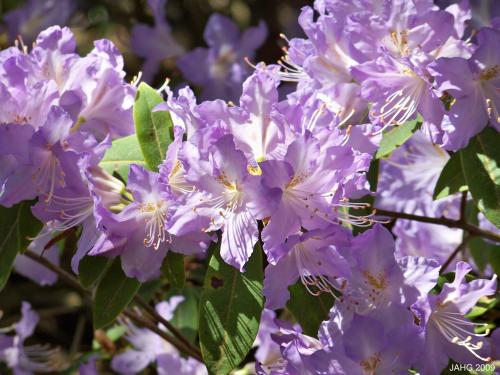
Rhododendron augustinii ssp. augustinii Much Like Augustine Henry Would Have Seen.
From there he was posted to Yichang(Ichanh) in remote Hubei Province (Central China) in 1882. There he investigated plants used in Chinese medicine. While there he started to collects plant specimens and seed to send to England.Later he was stationed in Sichuan and Yunnan, both areas where forms of Rhododendron augustinii is found. over his lifetime August Henry contributed 15,000 specimens including seeds and 500 plants to Kew Gardens and worked with many other important plant explorers of his time. He is truly one of the giants of the plant world as we know it today.

Rhododendron augustinii ssp. hardyii Found by Joesph Rock
As soon as Augustine’s Rhododendron came to England it was a hit and was soon gained an AM(Award of Merit) in 1920. The pureness of the blue color is unusual in the plant world and is coveted by all who see it. because of it’s color many forms of this plant have been collected. It has been crossed and recrossed with itself to produce dazzling results such as Lionel Rothchilds’ (Exbury) ‘Electra’ from 1937 which is an augustinii X augustinii ssp. ‘chasmanthum’ cross.

Rhododendron augustinii 'Electra' at Playfair Park.
Rhododendron augustinii has since been crossed with other blue and violet flowering Rhodos’ and the results have ranged from the icy blue ‘Blue Diamond’ through violet blue of ‘ Blaney’s Blue’ to the truly bluest of blue of ‘St. Breward’ and many more which have become famous in their own right.

Rhododendron augustinii x St. Breward. found at Finnerty Gardens.
We must consider ourselves lucky that Augustine’s Rhododendron is an easy adaptable plant to grow. It grows best in a sheltered posistion such as under or mixed with deciduous trees and shrubs. Rhododendron augustinii requires rich acidic soil which is moisture retaining, but well drained at the same time. Rhodos have shallow fine roots which can easily be damaged so it is advised to use mulch year round with little planting underneath.
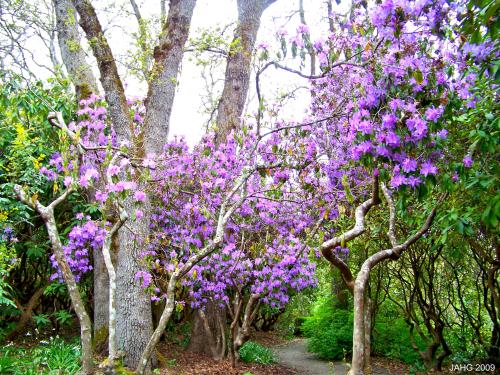
Augustine Rhododendrons seen in the Rhodo grove at Playfair Park.
Rhododendron augustinii plants are rated at zone 7b (-15c or 5f.) and grow up to 10ft(3m) in 10 years. These plants can be specimens in the garden because they have excellent small foliage and often become more tree form with age.
Happy Augustine’s Rhododendron Hunting!
Links to this weeks member of the plant world:
An excellent page of ‘augustinii’ pictures:http://www.rhododendron.dk/augustinii.html
Technical information on Rhododendron augustinii.http://www.efloras.org/florataxon.aspx?flora_id=2&taxon_id=200016341
All about Augustine Henry, a famous and important plant explorer.http://en.wikipedia.org/wiki/Augustine_Henry
Until we meet again later this week….
Read Full Post »










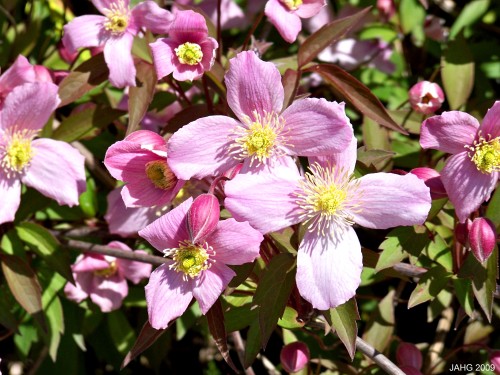

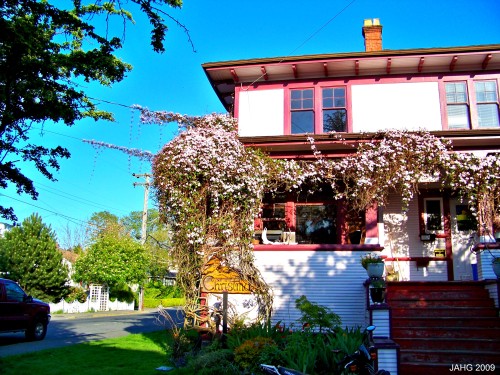

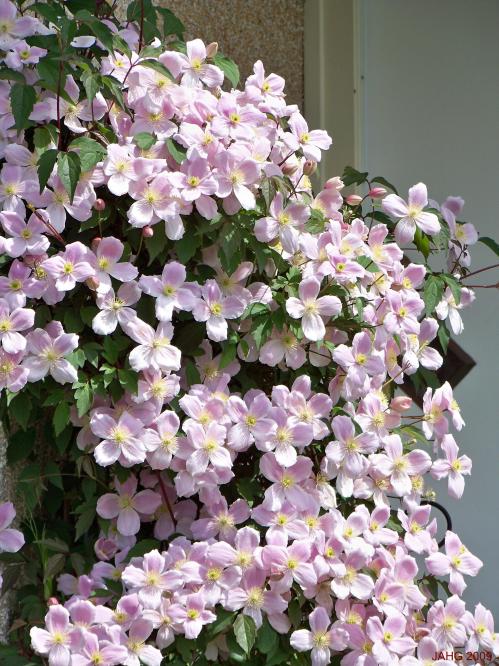


















 Stumble It!
Stumble It!






